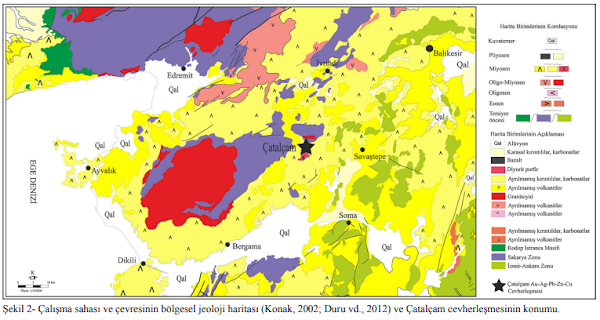Madencilik Sektörünün Dönüşümünde Yapay Zeka Uygulamaları ile Etkilerinin Analizi
Temel uygulamalar arasında keşif ve arama, maden planlama ve tasarımı, otonom operasyonlar, öngörücü bakım ve güvenlik ve çevresel izleme yer almaktadır.
Rapor, artan verimlilik, gelişmiş güvenlik, çevresel sürdürülebilirlik ve maliyet tasarrufu gibi AI'nın önemli faydalarını vurgulamaktadır. Ayrıca, veri kalitesi, entegrasyon ve düzenleyici uyumluluk dahil olmak üzere AI uygulamasıyla ilişkili zorlukları ve hususları da ele almaktadır.
Madencilik sektörü, AI'nın gücünden yararlanarak operasyonel verimlilik, güvenlik ve çevre yöneticiliğinde önemli ilerlemeler elde edebilir ve nihayetinde daha sürdürülebilir ve karlı bir geleceğe yol açabilir.
KAYNAK
Transforming the Mining Sector: An In-Depth Analysis of AI Applications and Their Impact

Abstract
Artificial Intelligence (AI) is revolutionizing the mining industry by enhancing operational efficiency, improving safety, and reducing environmental impacts. This report provides an in-depth analysis of the key applications of AI in the mining sector, supported by detailed data and evidence. Key applications include exploration and prospecting, mine planning and design, autonomous operations, predictive maintenance, and safety and environmental monitoring. The report highlights the significant benefits of AI, such as increased efficiency, enhanced safety, environmental sustainability, and cost savings. It also addresses the challenges and considerations associated with AI implementation, including data quality, integration, and regulatory compliance. By harnessing the power of AI, the mining sector can achieve significant advancements in operational efficiency, safety, and environmental stewardship, ultimately leading to a more sustainable and profitable future.
Introduction
Artificial Intelligence (AI) is revolutionizing the mining industry by enhancing operational efficiency, improving safety, and reducing environmental impacts. This report provides an in-depth analysis of the key applications of AI in the mining sector, supported by detailed data and evidence.
Key Applications of AI in Mining
1. Exploration and Prospecting
· Data Analysis: AI algorithms analyze large volumes of geological data, satellite imagery, and historical records to identify potential mineral deposits. For instance, AI-driven exploration has reduced the time required to identify viable mining sites by up to 50%, significantly cutting costs associated with traditional exploration methods.
· Pattern Recognition: Machine learning models can identify geological patterns and predict the locations of mineral deposits with higher accuracy.
2. Mine Planning and Design
· Optimization: AI tools optimize mine planning and design by simulating various scenarios and selecting the most efficient and cost-effective options.
· Resource Management: AI helps in precise resource characterization, ensuring efficient extraction and minimizing waste. Companies using AI for resource management have reported a 12% increase in resource utilization efficiency.
3. Autonomous Operations
· Autonomous Vehicles: AI-powered autonomous vehicles and equipment operate in hazardous environments, reducing the risks associated with human operation. These vehicles can work around the clock, increasing productivity by up to 30% and reducing labor costs by 20%.
· Robotics: AI-driven robots are used for drilling, blasting, and ore transportation, further enhancing safety and efficiency. The use of robotics in mining has led to a 25% reduction in operational downtime and a 15% increase in overall productivity.
4. Predictive Maintenance
· Equipment Monitoring: AI systems monitor the condition of mining equipment in real-time, predicting potential failures before they occur. This reduces downtime and maintenance costs, ensuring continuous operation. Predictive maintenance facilitated by AI can reduce maintenance costs by up to 20% and potentially save the mining industry $390 billion annually by 2035.
· Data-Driven Insights: By analyzing data from various sensors, AI provides insights into equipment performance and maintenance needs, allowing for proactive maintenance strategies. Companies implementing AI-driven predictive maintenance have reported a 30% reduction in unexpected equipment failures.
5. Safety and Environmental Monitoring
· Hazard Detection: AI systems detect safety hazards in real-time, such as gas leaks, structural weaknesses, and unsafe working conditions. This enhances the safety of mining operations.
· Environmental Compliance: AI monitors air and water quality, detects pollution, and ensures compliance with environmental regulations. This helps mining companies minimize their environmental footprint and align with global sustainability goals.
Benefits of AI in Mining
· Increased Efficiency: AI optimizes various mining processes, from exploration to extraction and processing, leading to higher productivity and lower operational costs. AI is estimated to increase productivity in the mining industry by 37% by 2035 and contribute to a 15% increase in revenue.
· Enhanced Safety: AI reduces the risks associated with mining operations by automating hazardous tasks and providing real-time safety monitoring.
· Environmental Sustainability: AI enables precise resource extraction and efficient waste management, reducing the environmental impact of mining activities. AI-driven sustainability initiatives have resulted in a 15% reduction in carbon emissions from mining operations.
· Cost Savings: Predictive maintenance and optimized operations result in significant cost savings for mining companies.
Challenges and Considerations
· Data Quality: The effectiveness of AI systems depends on the quality and accuracy of the data they analyze. Ensuring high-quality data is a critical challenge. Inconsistent or incomplete data can lead to inaccurate predictions and suboptimal decision-making.
· Integration: Integrating AI technologies with existing mining infrastructure requires significant investment and technical expertise. Companies must invest in training and development to ensure seamless integration and maximize the benefits of AI.
· Regulatory Compliance: Mining companies must navigate complex regulatory environments to implement AI solutions while ensuring compliance with safety and environmental standards. Regulatory frameworks may need to evolve to accommodate the rapid advancements in AI technology.
Conclusion
AI is poised to transform the mining sector by enhancing efficiency, safety, and sustainability. As mining companies continue to adopt AI technologies, they will gain a competitive edge and contribute to more sustainable and responsible mining practices. The future of mining lies in leveraging AI to unlock new opportunities and address the industry's most pressing challenges.
By harnessing the power of AI, the mining sector can achieve significant advancements in operational efficiency, safety, and environmental stewardship, ultimately leading to a more sustainable and profitable future.






Yorumlar
Yorum Gönder